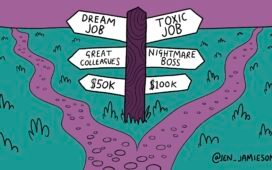
Put Your Foot On The Gas…Align Your Incentives With Gen Z Priorities
One of the biggest missteps we see organizations making at this stage is slowing down instead of stepping on the gas. Now is the time to leverage the momentum you’ve been slowly building and establish yourself as an employer of choice for the next generation of the workforce. Maybe you’re thinking, “We’re not Google or Deloitte or Apple. We can’t compete with the flashy incentives they can offer to Gen Z.” Don’t let the imposter syndrome win, my friends!
Let me clue you in on a little Hollywood secret: Beverly Hills 90210 wasn’t filmed in their famous namesake zip code. But that didn’t stop any viewers from buying into the story they were telling. With a powerhouse strategy and the right experts to help you shape and deliver it, you can absolutely compete with the best of the best. Here’s where I would start.
Make That Main Character Energy A Selling Point
I’m still upset about Dylan McKay’s untimely and sudden departure from the show. But imagine if Luke Perry’s character disappeared after just a few episodes like they had planned? Tragic! Good thing Perry turned guest star potential into breakout star opportunity.
Your future Gen Z employees are hoping to do the same with their careers at your organization. It’s not a job description; it’s the starring role in someone’s story. It’s not standard training; it’s an opportunity to perfect their craft. If you want to become an authority on the future of learning, it starts with aligning your incentives with Gen Z’s priorities.
How To Keep Up With Gen Z Priorities
Let’s get into the practical ways that you can catapult your organization into the future with tips to improve your L&D strategy across technology, engagement, and Gen Z priorities:
Gen Z Priorities
- Make your employees invaluable by providing valuable career development initiatives
This is a big deal for Gen Z. Whether it’s through tuition reimbursement for courses related to their work, in-house workshops, or mentorship programs, there is always more that can be done to show employees that you’re invested in their success. - Bring wellness to the workplace
Life is busy, and that’s not changing. If you really want to improve your employees’ work-life balance, consider providing on-site wellness activities, such as yoga classes or mindfulness sessions, so employees can address their mental health needs in real time. - Clear out the career path cobwebs
Make sure your employees know exactly how they can grow in your organization by having transparent criteria for promotions, offering training specific to attaining future managerial roles, and encouraging internal mobility by allowing employees to transfer between departments or take on new projects.
Engagement
- Instill ownership
If you want to create an environment where every team member feels valued, seen, and heard, (which, in turn, will boost productivity and innovation), it’s essential to include employees in the decision-making process and up the commitment ante. - Train your leaders to…lead
You’ve probably heard all the rhetoric about implementing regular feedback loops, like surveys, suggestion boxes, and open forums, where employees can voice their opinions freely. But how much thought is being put towards leadership training programs that can equip managers with the skills to effectively solicit and incorporate employee feedback, ensuring that team members feel genuinely listened to? Answer: Not enough. - Create cross-functional teams
Whether it’s for project work or decision-making committees, assembling cross-functional teams that are diverse in backgrounds and perspective making is an easy way to make employees feel valued for their unique contributions. Don’t overlook the simple solutions!
Technology
- Take a bespoke approach
Personalization is where AI truly shines in the realm of L&D [1]. By analyzing data on employee performance, learning styles, and preferences, AI can tailor learning content to meet the unique needs of each individual. These personalized learning paths can adapt in real time, recommending specific courses or materials based on performance and engagement levels. - Leverage data analytics for insightful decisions
Making informed decisions based on actual learning outcomes and engagement metrics means that you’ve accurately identified trends, strengths, weaknesses, and opportunities for improvement. This insight allows for the optimization of learning programs to better align with organizational goals and learner needs. - Incorporate microlearning and mobile learning
We’ve been shouting it from the rooftops: short, focused learning units that are easily accessible and can be completed in a few minutes are the untapped sweet spot. By providing learning in bite-sized pieces, you can improve engagement and facilitate continuous learning, thereby increasing accessibility and flexibility.
References
[1] The Power of Customized Learning Arcs: How Learner Personas Enhance Training Effectiveness















